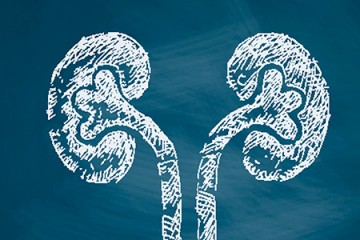A recent study of more than 1,000 transplants involving incompatible kidneys demonstrates that transplanting across certain antibodies may be a significantly better long-term option than waiting years for a compatible donor, researchers at the Johns Hopkins University School of Medicine say.

Image caption: Dorry Segev
The study, detailed in Thursday's issue of The New England Journal of Medicine, concluded that patients with "donor-specific" immune system antibodies against a living donor experience a survival rate of 76.5 percent if they undergo an incompatible live donor transplant. For patients who remain on dialysis waiting for a compatible organ to become available, the survival rate is 43.9 percent; it is 62.9 percent if such a compatible organ does become available.
There are roughly 20,000 patients at any one time on a donor waiting list who are "highly sensitized and for whom finding a compatible donor is nearly impossible," says lead author Dorry L. Segev, associate professor of surgery at the Hopkins School of Medicine. "That's a lot of people who could have a better chance at surviving if they are allowed to move forward with incompatible live donor transplantation."
These sensitized patients have developed antibodies against human leukocyte antigens—HLAs—key components of the immune system. These antibodies make it very difficult to match sensitized patients with a compatible donor, and many patients remain on waitlists for years without a suitable donor ever materializing.
Desensitivity, or HLA treatment, can be expensive. However, Segev notes, dialysis is more expensive.
"Incompatible transplantation is essentially one-tenth of the price of dialysis for a patient stuck on the waitlist," he says. "This study underscores the importance of innovative treatment options, such as incompatible live donor transplantation."
Incompatible live donor kidney transplantation, says Segev, was championed at The Johns Hopkins Hospital 15 years ago and later adopted by many other transplant centers around the country. This is the first study to evaluate whether this treatment option has been working nationally and is beneficial to patients. Segev and his team looked at the survival rates of 1,025 adult incompatible live donor kidney transplant recipients in 22 centers across the U.S.
The outcomes for the recipients were then compared to study controls—patients similar to the incompatible recipients who remained instead on the waiting list—matched on a variety of factors, including age, sex, ethnicity, blood type, and other diseases, such as diabetes. They studied two sets of controls: those who remained on the waiting list but never received a transplant (waitlist-only), and those who remained on the waiting list and eventually received a transplant (waitlist-or-transplant).
They found that survival rates were consistently higher for incompatible live donor kidney transplant recipients. At one year, incompatible kidney recipients had a survival rate of 95 percent versus 94 percent for the waitlist-or-transplant group and 89.6 percent for the waitlist-only group. At three years, incompatible kidney recipients had a survival rate of 91.7 percent versus 83.6 percent for the waitlist-or-transplant group and 72.7 percent for the waitlist-only group. At five years, incompatible kidney recipients had a survival rate of 86 percent versus 74.4 percent for the waitlist-or-transplant group and 59.2 percent for the waitlist-only group. And at eight years, incompatible kidney recipients had a survival rate of 76.5 percent versus 62.9 percent of the waitlist-or-transplant group and 43.9 percent in the waitlist-only group.
Segev says survival rates for control groups and transplant recipients were equivalent across the hospitals and centers participating in the study, regardless of whether they were high- or low-volume centers, and regardless of their experience in performing kidney transplants. He also noted that "significant survival benefit" was seen across all levels of sensitivity to HLAs.
The investigators caution that managing immune system challenges in this set of patients is complicated, carrying higher risks of serious side effects and organ failure than compatible transplants. But Segev emphasizes that for most sensitized patients, receiving a compatible live donor kidney is rarely an option, and their only choices are to undergo incompatible transplantation or remain on the waiting list, an option associated with a very high mortality rate, as shown in this study.
"In other words," Segev says, "it may be in the best interest of the patient to receive a transplant from an incompatible donor, even though the success rate is lower for such transplants than for those from compatible donors.
"For the first time, we have definitively shown that incompatible live donor kidney transplantation provides almost twice the survival of a patient's next best option," Segev says. "This is great news for patients who have healthy, willing live donors but who have been relegated to the waiting list because of HLA incompatibilities. Through this study, we now know that those donors can donate today, those transplants can happen and those lives can be saved."
Posted in Health
Tagged kidney disease, transplants, dorry segev, organ donation









